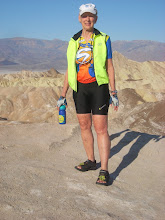Goodness gracious! For a 90 mile day, the ride was terrific. A tailwind sped us along for the first 60+ miles which was just so much fun! Thinking that we'd need substantial food to get us thru the long day, Linda parked at 46 miles and provided a very tasty lunch . I think everyone was at that stop by 10 or 10:30 because we all pulled out at 6 am to beat the heat. True to form, as the day wore on, the wind picked up. Just before reaching Malta, I saw a sign advertising DQ in 3.4 miles. Sue and I rode in together and went out of our way to get ice cream and lemonade. The day had gotten so hot that the extra distance was well worth the effort.
The sites today were mostly of wheat fields and lots of combines working the fields. We seemed to ride in a wide valley between two flat ridges or bluffs that probably were a mile away on each side. For awhile we could see Bear's Paw Mountains. There were many more homes along the road today and trees. Passed one field of hay bales. These were brown and looked like toasted marshmallows rather than plain marshmallows as pictured earlier. Also saw the occasional wildflowers.
About 25 miles of today's route was thru the Belknap Indian Reservation. It was in this area close to Chinook, MT, that Chief Joseph of the Nez Perce tribe finally surrendered to Col. Nelson Miles afer four days of fighting. In retrospect, according to our Adventure Cycling field notes, the Nez Perce could have survived if they had traveled less than a day's march into Canada where they would have found refuge.
The railroad was ever present today, also. With stops like Zurich, Harlem, Malta and yesterday's towns of Joplin, Inverness, Rudyard, Gilford and Kremlin, one can just imagine the many countries represented in settling the wild west. It was an extremely difficult existence. James J. Hill of Havre, Mt, was responsible for getting the railroad built across the Northern Plains. At $2.50 an acre and exagerated claims as to its fertility and productitivity, Hill encouraged migration from across the U.S. and even from Europe. It is reported that "low rates were established for the movement of household goods and farming equipment into the state; return rates on these same articles were so high that it was impossible for the farmer who became discouraged to leave and return to his native state." (AC Field Notes)
Just outside of Havre, Mt, we began criss crossing the Milk River. I remember cycling alongside this river last summer but can't remember exactly where. It seems that Meriwether Lewis described this river as "being about the color of tea with the admixture of milk," hence the name Milk River. It's definitely not as beautiful as the glacier rivers we saw earlier in the trip.
Saturday, July 10, 2010
Subscribe to:
Post Comments (Atom)






Enjoy the Milk River and keep your eyes open for big whitetail deer. It has some of the best hunting in the country. We've had lots of rain here, but I'm hoping it blows through tonight so that I can take a friend tarpon fishing in the morning.
ReplyDelete